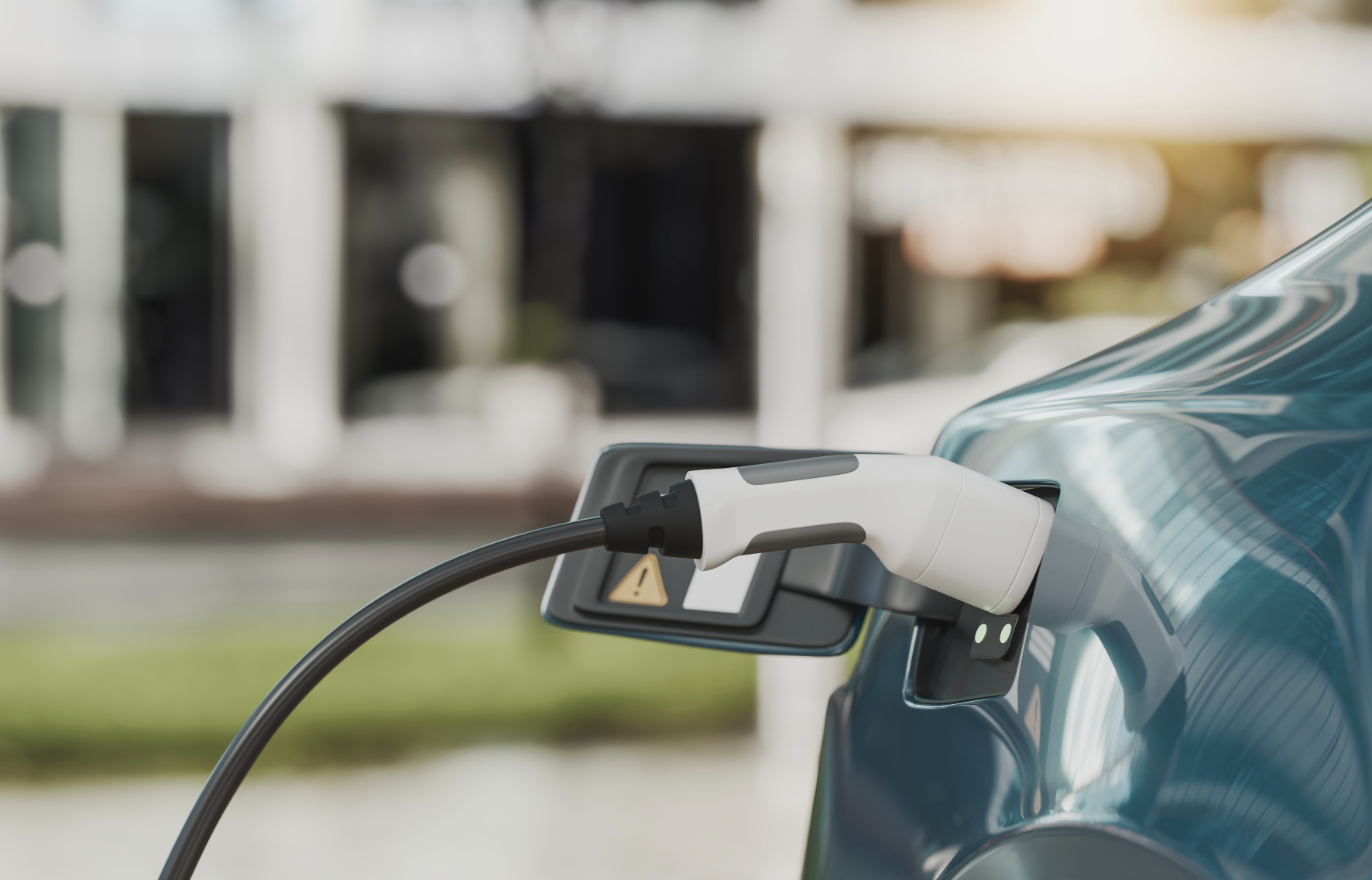Tips for Optimizing Lithium-ion Car Battery Charging
Published

Learning about recommended lithium-ion automotive battery charging practices supports the durability, performance, and reliability of lithium-ion batteries. Improper charging methods may reduce battery capacity, decrease battery performance, and pose safety risks such as overheating and swelling. Using the correct charging method for lithium-ion batteries (LIBs) powering electric vehicles lengthens charging life, prevents electrode damage, and maximizes overall energy storage capacity over time.
Understanding Lithium-Ion Battery Technology
LIBs use lithium compounds to maintain an electrical energy charge. A battery cell contains an electrolyte, cathode, anode, separator, and positive and negative current collector. Battery packs often include multiple cells to achieve desired voltages and capacities for specific applications.
The electrolyte conveys positively charged lithium ions between the cathode and the anode, moving from one electrode to the other through the separator. This vice versa movement creates free electrons in the anode, creating a charge at the positive current collector.
The electrical current generated flows from the collector through the vehicle or other device being powered to the negative current collector. The separator inside the lithium-ion battery electrically insulates the cell to prevent short circuits and ensure current travels through the external circuit.
Lithium ions move from the anode to the cathode when the battery discharges to provide electric current, creating a flow of electrons through an external circuit. This electron flow powers the device. During charging, the process reverses, and the cathode releases lithium ions, which then travel back to the anode for storage.
Energy Density
Valued for their high energy density compared to lower energy density nickel-cadmium or lead-acid batteries, LIBs are the first-choice energy storage systems for applications that demand maximum power output within smaller areas, such as laptops, cell phones, and electric vehicles.
Electric vehicles can operate on a single charge for extended periods and offer enhanced driving power from Lithium-ion batteries. While higher energy density benefits EV owners, it also comes with safety concerns, such as thermal runaway and overheating, if the battery is damaged or handled improperly.
Manufacturers are endeavoring to increase the energy density of lithium-ion batteries to lengthen runtimes in laptops and cell phones
Power Density
Power density is a measure of how much power a battery delivers per unit of mass or volume (i.e., watts per kilogram or liter). Sufficient power density is vital for space- and weight-limited devices like electric vehicles and portable electronics.
Factors Affecting Battery Health and Performance
Temperature Fluctuations
Avoid exposing lithium-ion batteries to extreme temperatures. High temperatures promote degradation, while low temperatures reduce energy efficiency and limit the battery’s ability to store energy. Charging in high temperatures or extreme cold may cause permanent damage and reduce the battery’s volumetric energy density. Always charge Lithium-ion batteries in moderate temperatures to reinforce battery performance and functionality.
Acceptable temperatures for charging and storing lithium-ion batteries are between -20°C. and 60 °C. Environmental conditions exceeding these two temperatures will lead to performance degradation, permanent damage to lithium plating, and thermal runaway.
Depth of Discharge Cycles
The depth of the discharge cycle refers to how much of a battery’s charge is depleted before recharging. LIBs perform optimally when their charge state is maintained between 20% and 80%. Avoiding deep discharge cycles (allowing the charge state to fall below 20% or exceed 80%) is a determining factor in extending the battery’s lifespan by reducing the deterioration of the lithium-ion chemical composition and the cathode/anode materials.
Charging Speed
While charging a LIB as quickly as possible is more convenient, fast charging can put undue stress on lithium-ion batteries by generating too much heat and promoting unwanted side-reactions. The liquid electrolyte in LIBs degrades gradually under excessive heat, which affects energy and power densities.
Electric car buyers should consider taking advantage of optimized battery charging systems included in newer EVs. These smart systems automatically regulate charging speeds and moderate energy flow to reduce the risk of overcharging. Some innovative charging systems allow preset charging times during low-demand hours to minimize heat buildup in LIBs.
Maximize Regenerative Braking
Regenerative braking allows electric cars to recoup energy when a driver brakes by returning kinetic energy to the LIB. The battery draws on this “regenerated” energy the next time the driver accelerates. Regenerative braking reduces the need for external charging and helps extend battery life by decreasing the number of discharge cycles.
All EVs have conventional disc brakes and regenerative braking systems to provide powerful, responsive braking in high-traffic conditions.
Choose Charging Stations Wisely: Fast Charging vs. Smart Charging
Frequent use of fast charging stations strains lithium-ion batteries due to high voltage and temperatures. Use slow or smart charging systems when possible and reserve fast charging for emergencies or long road trips. Smart chargers may contain built-in monitoring and diagnostic capabilities that provide information about a battery’s current performance status.
Maintaining Lithium-ion Batteries: Optimizing Power and Longevity
Regularly Check Battery Management Systems (BMS)
Battery Management Systems (BMS) constantly monitor variables such as battery cell health, temperature, voltage, and charge state. A BMS regulates energy flow within the battery to reduce the risk of discharging or overcharging, which decreases wear and tear affecting battery materials and anode/cathode components.
Regularly checking the status of a BMS can help stop potential problems from escalating and irreparably damaging the battery. Advanced BMS systems provide in-depth reports on battery health, while simpler BMS systems issue alerts when LIBs are no longer operating at their peak.
Schedule Periodic Maintenance
A routine inspection of a lithium-ion battery includes checking the battery’s voltage, charge cycles, energy storage capacity, and performance under different loads. LIB specialists also evaluate the cooling system to determine if the system is maintaining moderate temperatures and energy density. For EV owners who use fast charging more than slow charging, ensuring that a LIB’s cooling system works correctly is particularly important to prevent overheating. Periodic maintenance checks should also include inspection of connectors, wiring, and regenerative braking systems.
Always follow manufacturer-recommended maintenance schedules since lithium-ion battery technology varies among models. LIB manufacturers typically recommend a professional battery analysis according to battery types, such as whether it utilizes solid-state, lithium iron phosphate, or another battery chemistry.
New Battery Technologies[SA13]
Solid-state batteries use a solid electrolyte to move charge instead of the liquid or gel electrolytes used in lithium-ion or traditional batteries. This design enhances safety, energy density, and longevity by eliminating overheating risks and increasing storage capacity. Moreover, solid-state batteries are higher-performing than others and are considered a viable advancement in battery development.
Solid-state batteries have advantages over LIBs, such as higher energy density, longer cycle life, and a reduced possibility of electrolyte leakage.
Lithium Iron Phosphate (LFP) Batteries
LFP batteries exhibit superior thermal stability, making them ideal for high-power applications in EVs. Their resistance to degradation during charge cycles also provides a longer lifespan. LFP batteries are also more cost-effective than LIBs, have high thermal stability, and are environmentally friendly. Uses for LFP batteries include grid and renewable energy storage systems, backup power systems, aerospace and military equipment, and cutting-edge medical devices.
Cobalt-free Lithium-ion Batteries
Working similarly to LIBs, cobalt-free lithium-ion batteries lack the cobalt needed to stabilize cathodes. The primary advantage of cobalt-free LIBs involves minimizing the reliance on costly and problematic cobalt mining.
Iron-air Batteries
Among new battery technologies, iron-air batteries represent one of the cost-effective, stored-energy inventions, providing 100 hours of storage at a fraction of the cost of lithium-ion batteries. They generate energy by oxidizing iron with oxygen, which turns into rust. When an iron-air battery charges, its cells undergo reverse oxidation, restoring iron to its original state.
Although iron-air batteries are more affordable than LIBs, they have two drawbacks: their large size and slow charging speed.
Technical Challenges of Emerging Battery Cell Design
To increase energy density without compromising safety or battery lifespan, researchers must eliminate thermal runaway risks in solid-state designs while generating more energy to sustain optimal performance over hundreds of charge cycles. In addition, scalability, utilizing sustainable material resources, modifying temperature sensitivity, and implementing effective recycling processes are also problems that need to be resolved before new, higher-capacity batteries are ready for electric vehicle, consumer, and industry use.
Covalent Metrology: Your Partner in Battery Innovation
A global leader in battery research and innovation services, Covalent Metrology utilizes advanced materials analysis and proprietary expertise to provide high-resolution imaging and spectroscopy testing and consulting. Our cutting-edge microscopy tools enable precise characterization of lithium-ion battery components and processes, driving innovation and groundbreaking discoveries in the EV battery industry.
Our battery testing solutions include state-of-the-art methods for analyzing electrode materials, electrolytes, and interfaces critical to producing more efficient, longer-lasting batteries. Covalent Metrology works with researchers and manufacturers to improve battery design and functionality by providing nanoscale insights into material properties and behavior. Our commitment to using only the most advanced analytical techniques available actively accelerates the invention of next-generation energy storage systems.
